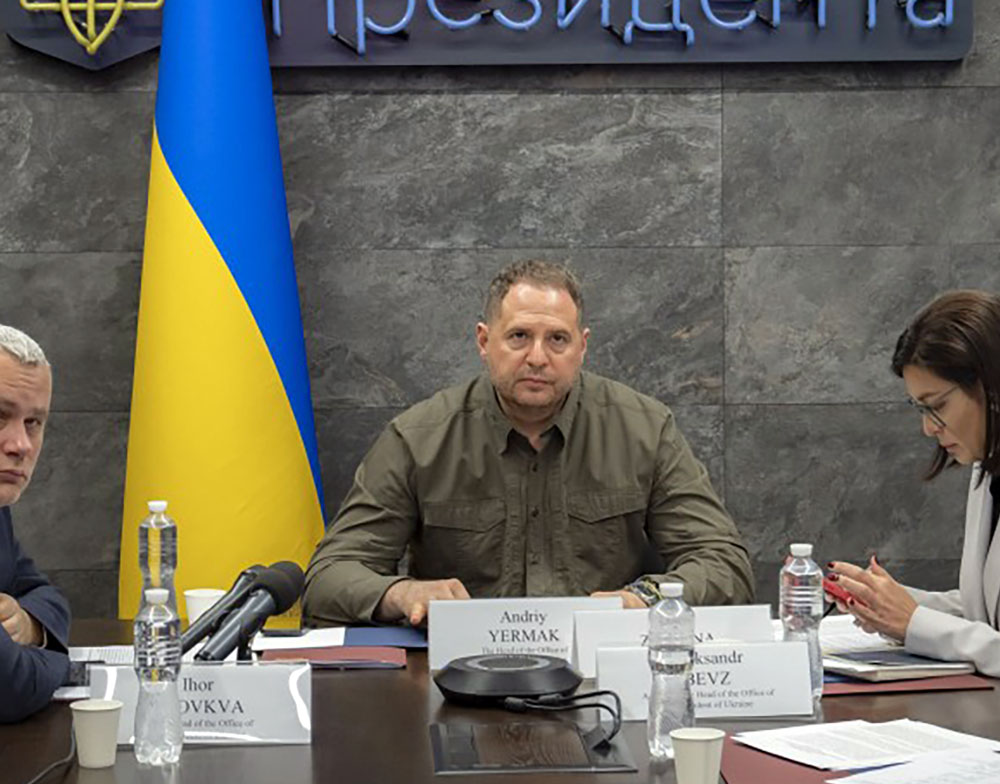Virtual Welcome Remarks at the “One Arctic, One Health” Workshop
Monica Medina, Assistant Secretary Bureau of Oceans and International Environmental and Scientific Affairs Tromsø, Norway Thank you to our Norwegian colleagues for hosting this workshop, and thank you for your leadership on One Health in the Arctic. I’m pleased to see such a diverse group of participants engaging on One Arctic, One Health. I have placed a heavy emphasis on taking a One Health approach in my bureau. We recognize the linkages between the health of people and the health of the planet. We also recognize that climate change has profound impacts on health – human health as well as the flora and fauna we interact with. And when I think about the Arctic region, one issue comes to mind before almost any other: climate change. Tackling the health effects of climate change – in a region warming at four times the global average rate – requires a One Health approach and urgency. So your work is at the front lines. It’s essential that we use tabletop exercises like this one to simulate and better understand the complex dynamics between climate, humans, and animal communities. At the same time, I recognize that there’s more to One Health than climate change. I am pleased to see zoonotic avian influenza is also part of this week’s simulation. We are all too aware of the pandemic threat here, and the need to address this issue with a robust human-animal-environmental approach. I’d also like us to recognize the importance of indigenous communities as vital sources of wisdom and as the primary responders to Arctic emergencies. We should celebrate and applaud the strong participation and commitment from indigenous communities on these vital issues. This is a hallmark of the Arctic Council, and it’s a tradition of doing diplomacy in the Arctic that we must continue to build upon. Addressing One Health, climate resiliency, and Arctic sustainable development demands integrated action and leadership. That’s what the Arctic Council is designed to deliver, and that’s why your leadership is so important. The United States recently released its National Strategy for the Arctic Region. Of the four pillars that make up the strategy, I’m going to touch on two: 1) Climate Change and Environmental Protection, and 2) International Cooperation and Governance. On climate change and environmental protection, the U.S. government is committed to building resilience to the impacts of climate change and conserving Arctic ecosystems. On international cooperation, despite the challenges to Arctic cooperation caused by Russia’s war in Ukraine, the United States will continue to sustain institutions for Arctic cooperation and position these institutions to manage the impacts of increasing activity in the region. A great example of the nexus of these two pillars is found in the work of the Arctic Council. The Arctic Council is the foremost intergovernmental forum that encompasses both environmental protection and international cooperation in the Arctic. We’re proud to have been deeply involved in its work for more than 26 years since the signing of the Ottawa Declaration, and we continue to support the Council as we conduct its critical work going forward, including here, in Norway, through the work you’re doing today via the Sustainable Development Working Group’s One Arctic, One Health Project. This activity represents a key example of how Arctic Council stakeholders can continue to advance regional health security and climate resilience, even amid these challenging times. As part of this National Strategy, the U.S. government reiterates its commitment to coordinating, and co-managing with U.S. Indigenous Arctic inhabitants, their communities, and organizations. We recognize that Indigenous communities are at the heart of everything we do in the Arctic, from addressing health, water, and energy security in a changing climate, to monitoring and protecting the health of Arctic ecosystems. Thank you for your time. I wish you all a very successful workshop.

Monica Medina, Assistant Secretary Bureau of Oceans and International Environmental and Scientific Affairs
Tromsø, Norway
Thank you to our Norwegian colleagues for hosting this workshop, and thank you for your leadership on One Health in the Arctic. I’m pleased to see such a diverse group of participants engaging on One Arctic, One Health.
I have placed a heavy emphasis on taking a One Health approach in my bureau. We recognize the linkages between the health of people and the health of the planet. We also recognize that climate change has profound impacts on health – human health as well as the flora and fauna we interact with. And when I think about the Arctic region, one issue comes to mind before almost any other: climate change.
Tackling the health effects of climate change – in a region warming at four times the global average rate – requires a One Health approach and urgency. So your work is at the front lines. It’s essential that we use tabletop exercises like this one to simulate and better understand the complex dynamics between climate, humans, and animal communities.
At the same time, I recognize that there’s more to One Health than climate change. I am pleased to see zoonotic avian influenza is also part of this week’s simulation. We are all too aware of the pandemic threat here, and the need to address this issue with a robust human-animal-environmental approach.
I’d also like us to recognize the importance of indigenous communities as vital sources of wisdom and as the primary responders to Arctic emergencies. We should celebrate and applaud the strong participation and commitment from indigenous communities on these vital issues. This is a hallmark of the Arctic Council, and it’s a tradition of doing diplomacy in the Arctic that we must continue to build upon.
Addressing One Health, climate resiliency, and Arctic sustainable development demands integrated action and leadership. That’s what the Arctic Council is designed to deliver, and that’s why your leadership is so important.
The United States recently released its National Strategy for the Arctic Region. Of the four pillars that make up the strategy, I’m going to touch on two: 1) Climate Change and Environmental Protection, and 2) International Cooperation and Governance. On climate change and environmental protection, the U.S. government is committed to building resilience to the impacts of climate change and conserving Arctic ecosystems. On international cooperation, despite the challenges to Arctic cooperation caused by Russia’s war in Ukraine, the United States will continue to sustain institutions for Arctic cooperation and position these institutions to manage the impacts of increasing activity in the region. A great example of the nexus of these two pillars is found in the work of the Arctic Council. The Arctic Council is the foremost intergovernmental forum that encompasses both environmental protection and international cooperation in the Arctic.
We’re proud to have been deeply involved in its work for more than 26 years since the signing of the Ottawa Declaration, and we continue to support the Council as we conduct its critical work going forward, including here, in Norway, through the work you’re doing today via the Sustainable Development Working Group’s One Arctic, One Health Project. This activity represents a key example of how Arctic Council stakeholders can continue to advance regional health security and climate resilience, even amid these challenging times.
As part of this National Strategy, the U.S. government reiterates its commitment to coordinating, and co-managing with U.S. Indigenous Arctic inhabitants, their communities, and organizations. We recognize that Indigenous communities are at the heart of everything we do in the Arctic, from addressing health, water, and energy security in a changing climate, to monitoring and protecting the health of Arctic ecosystems.
Thank you for your time. I wish you all a very successful workshop.



